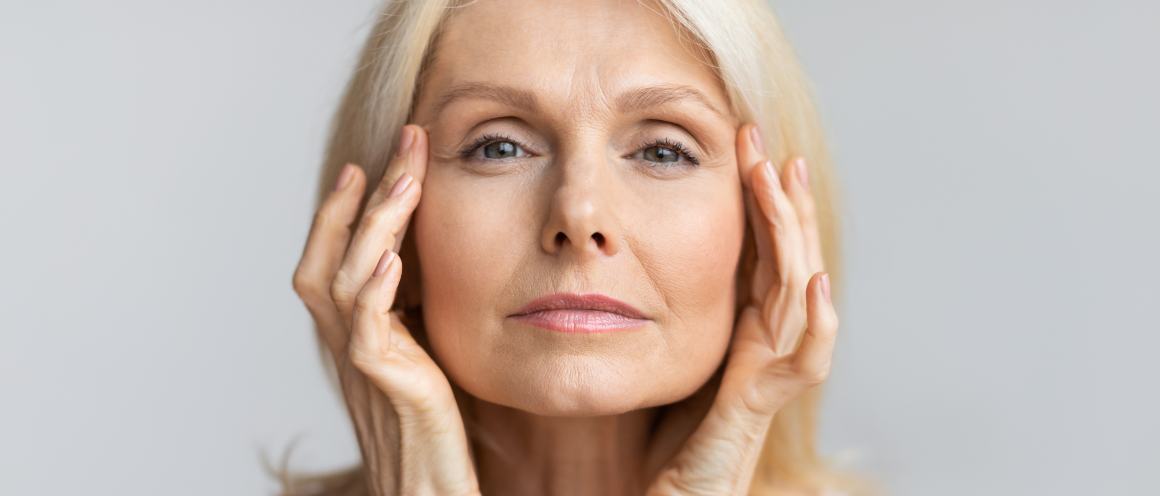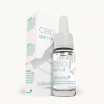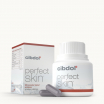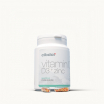Can vitamin d reverse aging?
Published:
Categories: CollagenHow Vitamin D3 Deficiency Contributes to Premature Aging and What You Can Do About It
Aging is an inevitable part of life, but the rate at which we age is not set in stone. Our biological age often differs from our chronological age due to a variety of lifestyle and genetic factors. One key determinant of biological aging is vitamin D3 status.
Contents:
- How Vitamin D3 Deficiency Contributes to Premature Aging and What You Can Do About It
- Why Does Vitamin D3 Matter for Healthy Aging?
- What Causes Vitamin D3 Deficiency and Its Effects on Aging?
- What are the Optimal Vitamin D3 Levels for Slowing Aging?
- How Much Vitamin D3 Per Day Is Needed to Optimize Levels?
- What Are the Best Food Sources of Vitamin D3?
- Lifestyle Tips to Boost Vitamin D Levels and Slow Aging
- Key Takeaways on Vitamin D3 and Biological Aging
-
Frequently Asked Questions About Vitamin D3 and Biological Aging
- How do I know if I'm vitamin D3 deficient?
- What are the symptoms of vitamin D3 deficiency?
- Is taking too much vitamin D3 dangerous?
- How long does it take to increase vitamin D3 levels?
- Will vitamin D3 supplements interact with any medications I take?
- Is it safe to use tanning beds to increase my vitamin D3?
- What's the difference between vitamin D2 and D3 supplements?
- What should I eat to get more vitamin D3 from my diet?
- Does magnesium improve vitamin D3 absorption?
- How often should I get my D3 levels tested?
Vitamin D3 deficiency is increasingly common worldwide and can accelerate the aging process in many ways. Understanding the connection between vitamin D3 and premature aging is crucial, as optimizing vitamin D3 levels can help slow aging and promote healthy longevity. This article will cover the multifaceted role vitamin D3 plays in biological aging and provide actionable tips to avoid deficiency.

Why Does Vitamin D3 Matter for Healthy Aging?
Vitamin D3 is a powerful hormone that plays an important role in many aspects of health. It regulates over 2000 genes, influences immune function, supports cardiovascular health, and much more. Vitamin D3 deficiency is linked to an increased risk of various age-related diseases, including osteoporosis, cancer, diabetes, hypertension, and neurocognitive decline.
By supporting healthy cell function and genetic expression, adequate vitamin D3 status helps prevent premature onset of age-related changes. Research indicates vitamin D3 has anti-aging effects in both the skin and the body as a whole. Understanding exactly how vitamin D3 influences biological aging on a cellular level provides insights into why maintaining optimal levels is so important.
What Causes Vitamin D3 Deficiency and Its Effects on Aging?
While some vitamin D3 comes from food sources like oily fish, egg yolks, and fortified dairy, over 90% of our requirement comes from sunlight. Vitamin D3 is produced in the skin when UVB rays interact with cholesterol. However, many factors can interfere with cutaneous vitamin D3 synthesis, leading to widespread deficiency. These include:
- Living in northern latitudes with less intense sun exposure
- Having darker skin tone that blocks UVB penetration
- Being housebound or wearing sunscreen that prevents UVB absorption
- Naturally declining production in aging skin
- Obesity, which sequesters vitamin D3 in fat cells
Without adequate sun exposure, many adults and seniors are unable to meet their vitamin D3 needs endogenously. Low levels of this critical hormone accelerate biological aging through:
- Dysregulated cellular growth and division
- Impaired DNA repair mechanisms
- Increased oxidative stress and inflammation
- Disruption of metabolic pathways
- Declining muscle mass and strength
- Loss of bone mineral density
What are the Optimal Vitamin D3 Levels for Slowing Aging?
Experts suggest that maintaining a 25(OH)D serum level between 40-60 ng/ml is optimal for health. This protects against aging-related changes and diseases. Those with lower vitamin D3 status are at far greater risk of accelerated biological aging.
Studies show that adults with levels below 20 ng/ml have:
- 3.6 times higher risk of premature death
- 30% greater all-cause mortality rate
- Doubled risk of developing metabolic syndrome
Reaching ideal vitamin D3 levels can add up to 5 years of healthy life expectancy while preventing or postponing many age-related disorders.
How Much Vitamin D3 Per Day Is Needed to Optimize Levels?
The officially recommended daily intake is 600-800 IU. However, this is likely inadequate for those starting with deficiency. Research shows that supplementing with higher doses can quickly improve status:
- 1000-4000 IU per day for adults is safe and effective
- Therapeutic dosing of 5000-10,000 IU may be used short term if deficient
- Optimal intake depends on individual factors like body weight, ethnicity, location, and testing results
Work with your doctor to determine the right vitamin D3 dosage for you based on symptom history and blood levels. Take supplements consistently to maintain continuous sufficiency.
What Are the Best Food Sources of Vitamin D3?
While it is difficult to get enough vitamin D3 from food alone, you can incorporate more dietary sources as part of a multifaceted anti-aging strategy. The top food sources include:
- Oily fish like salmon, mackerel, sardines
- Egg yolks
- Fortified milk, yogurt, orange juice
- Beef liver
- Mushrooms exposed to UV light
- Fortified cereals and plant milks
Aim for 2-3 servings of vitamin D-rich foods daily as part of a nutrient-dense diet. This provides a base of coverage to complement sun exposure and supplementation.
Lifestyle Tips to Boost Vitamin D Levels and Slow Aging
- Get daily direct sun exposure - Aim for 10-30 minutes per day with arms and legs exposed to stimulate vitamin D3 synthesis. Be careful not to burn.
- Consider UVB tanning - Carefully controlled UVB tanning beds mimic sunlight and boost vitamin D3. Use minimally per guidelines.
- Eat a clean, anti-inflammatory diet - Processed foods and unhealthy fats cause oxidative stress that depletes D3 levels. An anti-aging diet rich in antioxidants can help optimize status.
- Maintain a healthy weight - Obesity promotes vitamin D3 deficiency. Shedding excess fat improves bioavailability and absorption.
- Rule out absorption issues - Malabsorption disorders like celiac disease prevent proper vitamin D3 uptake. Diagnose and treat any gut issues.
- Optimize related nutrients - Ensure sufficient magnesium, vitamin K2, and omega-3s for optimal vitamin D3 metabolism and activity.
- Stay active - Weight-bearing exercise and strength training helps raise vitamin D3 levels over time by reducing body fat.
Key Takeaways on Vitamin D3 and Biological Aging
- Vitamin D3 is essential for healthy aging as it regulates genetic expression, immune function, metabolism, and more.
- Widespread deficiency accelerates aging on a cellular level and promotes age-related disorders.
- Reaching optimal D3 levels can add years of healthy longevity by slowing biological aging.
- Testing levels, sun exposure, diet, and supplementation are key to overcoming deficiency.
- A daily dose of 1000-4000 IU may be needed for adults to maintain ideal status long-term.
- Optimizing vitamin D3 now can help reduce premature aging and keep you thriving well into old age.
Maintaining robust vitamin D3 status should be part of any comprehensive anti-aging plan. Take steps to assess your levels, safely increase sun exposure when possible, consume more dietary sources, and supplement as needed. Addressing a vitamin D3 deficiency can help turn back your biological clock and promote graceful lifelong aging.
Frequently Asked Questions About Vitamin D3 and Biological Aging
How do I know if I'm vitamin D3 deficient?
The only way to diagnose a deficiency is to test your 25(OH)D levels through a simple blood test. Adults should aim for serum levels between 40-60 ng/ml for optimal health and slowing of aging. Levels below 30 ng/ml indicate deficiency.
What are the symptoms of vitamin D3 deficiency?
Some common signs include frequent illness or infection, fatigue, bone/joint pain, muscle weakness, mood changes, hair loss, and impaired wound healing. However, a blood test is still needed to confirm low D3 levels.
Is taking too much vitamin D3 dangerous?
Getting adequate sunshine and maintaining a level around 50 ng/ml is completely safe. Very high doses over 10,000 IU daily long-term can potentially cause toxicity, so work with your doctor if using high-dose supplementation.
How long does it take to increase vitamin D3 levels?
Most adults taking 1000-5000 IU per day see an increase of 10 ng/ml over 2-3 months. Re-testing your blood levels after 3 months of daily supplementation can confirm your dosage is sufficient.
Will vitamin D3 supplements interact with any medications I take?
The main drug interaction is with steroids, which can interfere with vitamin D3 metabolism. Some diuretics, laxatives, anti-seizure drugs, anti-tuberculosis medications, and anti-fungals may also impact absorption and excretion.
Is it safe to use tanning beds to increase my vitamin D3?
Occasional use of UVB tanning beds can boost D3 production in the skin. However, excessive use also raises skin cancer risk. Limit to a few minutes per session 1-2 times per month maximum.
What's the difference between vitamin D2 and D3 supplements?
D3 (cholecalciferol) is the naturally occurring form made in the skin. It lasts much longer in the body than D2 (ergocalciferol). D3 has been shown to increase serum levels more efficiently, so is preferred.
What should I eat to get more vitamin D3 from my diet?
Fatty fish, egg yolks, liver, fortified dairy and juices, and UV-exposed mushrooms are the top sources. Aim for at least two servings daily as part of an anti-aging diet. Supplements are still likely needed year-round.
Does magnesium improve vitamin D3 absorption?
Yes, magnesium is required to convert vitamin D3 into its active form usable by the body. Taking a magnesium supplement can maximize the benefits of vitamin D3.
How often should I get my D3 levels tested?
Get tested at least once per year, especially if you are supplementing. Testing in both summer and winter lets you see if sun exposure affects your status. More frequent monitoring helps ensure you maintain optimal levels long-term.
Resources used to write this article
Jones, K.S., Assar, S., Harnpanich, D., Bouillon, R., Lambrechts, D., Prentice, A., & Schoenmakers, I. (2014). 25(OH)D2 half-life is shorter than 25(OH)D3 half-life and is influenced by DBP concentration and genotype. The Journal of Clinical Endocrinology & Metabolism, 99(9), 3373-3381. https://doi.org/10.1210/jc.2014-1714
Lips, P., van Schoor, N. M., & de Jongh, R. T. (2014). Diet, sun, and lifestyle as determinants of vitamin D status. Annals of the New York Academy of Sciences, 1317(1), 92–98. https://doi.org/10.1111/nyas.12443
Martinez, Y., Li, X., Liu, G., Bin, P., Yan, W., Masli, S., ... & Huang, Y. (2017). The role of vitamin D in psoriasis: a review. International journal of molecular sciences, 18(12), 2608. https://doi.org/10.3390/ijms18122608
Pludowski, P., Holick, M. F., Grant, W. B., Konstantynowicz, J., Mascarenhas, M. R., Haq, A., ... & Rudenka, E. (2018). Vitamin d supplementation guidelines. The journal of steroid biochemistry and molecular biology, 175, 125-135. https://doi.org/10.1016/j.jsbmb.2017.01.021
Uwitonze, A. M., Murererehe, J., Ineza, M. C., Harelimana, E. I., Nsabimana, U., Uwimpuhwe, H., ... & Razzaque, M. S. (2018). Effects of vitamin D status on oral health. Journal of steroid biochemistry and molecular biology, 180, 190-194. https://doi.org/10.1016/j.jsbmb.2017.12.003
Wimalawansa, S. J. (2018). Vitamin D deficiency: effects on oxidative stress, epigenetics, gene regulation, and aging. Biology, 7(2), 30. https://doi.org/10.3390/biology7020030
Sign up to our newsletter and enjoy 10% off one order
YOU MIGHT ALSO LIKE
Post related products
-

-

-

Look Younger CIBD0073
-


















